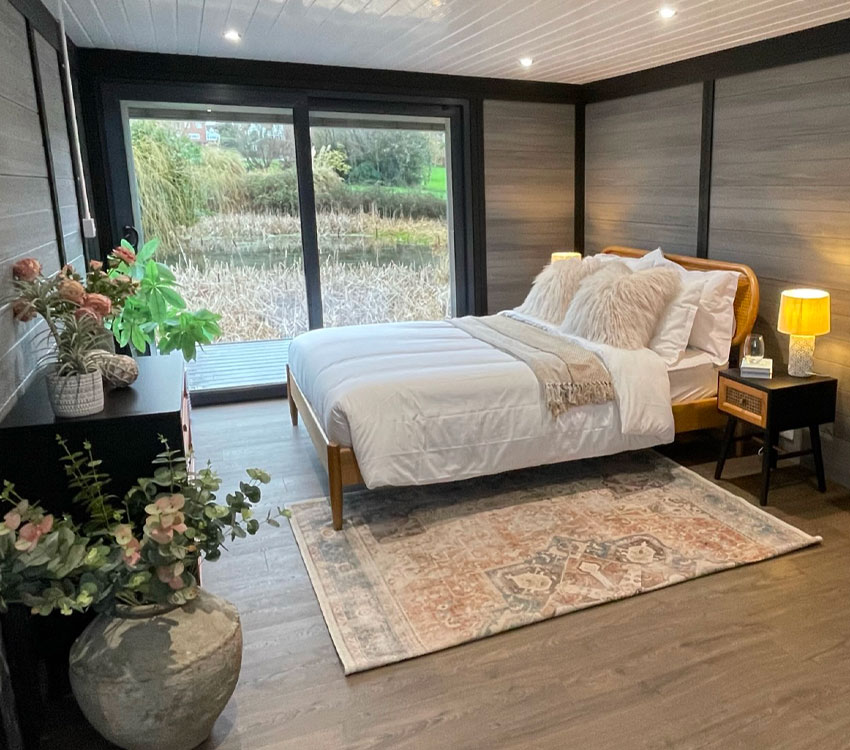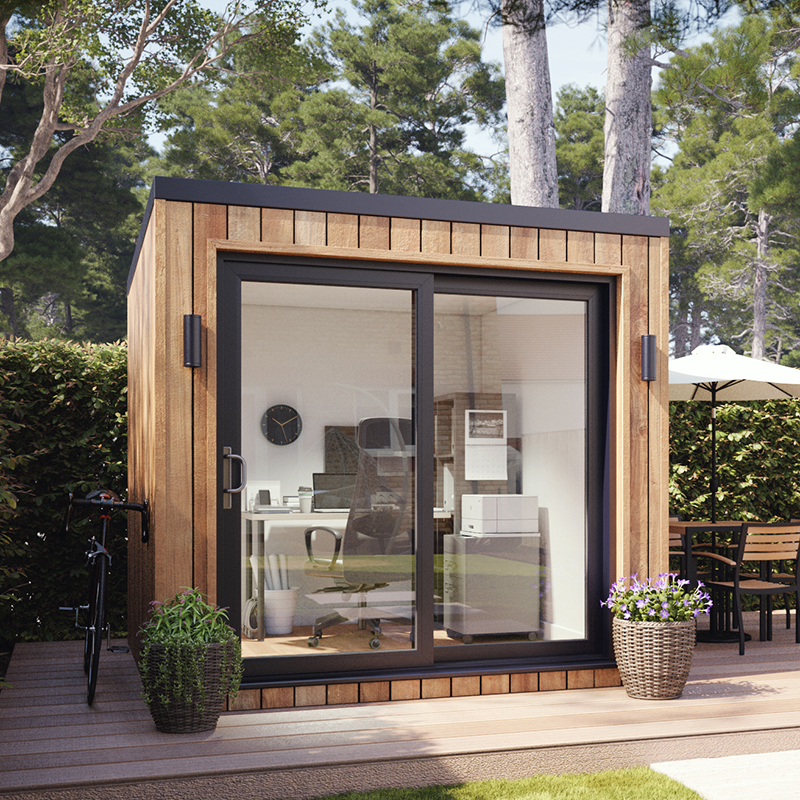When you plan to build garden rooms, conservatories outhouses, garden offices, or extensions, highways considerations are an important factor that can affect the necessity of planning permission. Here are the key considerations: Visibility and Sight Lines
Planning permission is needed if the structure is obstructing access to motorists entering or leaving the property, or impacts sightlines at intersections or roads that bend. The authority for planning will determine whether the building poses a risk to road safety.
Nearness to the highway
Planning permission is generally required for buildings that are built close to the highway. For example, front garden rooms, extensions along the street or even extensions within the street. The distance between the structure and the highway is controlled to avoid any interference.
Access and Egress
Planning permission may be required in the event that you wish to modify or build new access points. This ensures that egress and access are secure and don't disrupt the flow of traffic.
Parking Provision
Planning permission could be required if a proposed construction affects parking spaces or requires extra parking. The planning authority will determine whether the new development has sufficient parking space and does not create congestion for parking on the street.
Traffic Generation
Developments that are expected to generate an increase in traffic, for example gardens designed for business use with clients visiting, need planning permission. The level of traffic in the vicinity and road safety are analyzed.
Effect on Pedestrian Access
Planning permission could be needed if a proposed structure would interfere with pavements or walkways for pedestrians. To ensure pedestrian safety and access, it is essential to not block the walkway.
Construction Impact on Highways
Planning permission could be needed when the impact of construction on highways is substantial, for example temporary obstructions and heavy traffic. The planning authorities can set the requirements to minimize interruptions to the roads network.
Drainage and water runoff
The effect of the development on drainage and water runoff, particularly how it affects the highway, is another consideration. The new structure must be approved by the planning authority in order to prevent flooding and drainage issues on the road.
Street Furniture and Utilities
The planning permission must be obtained if the proposed development will impact the street furniture, underground utilities, or both (e.g. water cables, pipes, etc.). The planning authority will work with the relevant agencies to address these concerns.
Highway Authority Guidelines
Local highway authorities might have specific guidelines or requirements regarding development in areas close to highways. Planning permission ensures that the regulations are followed to maintain the safety of roads.
Noise and disturbances caused by traffic
If the building being constructed is likely to cause more disruption or noise due to traffic, like a garden-office that receives customers or visitors, planning permission might be required to evaluate and mitigate the effect.
Accessibility to public transport
Planning permission is required for any development that could affect accessibility of public transportation facilities such like bus or train stations. It will also be evaluated its impact on the public transport network as well as its integration.
Highways play a significant role in determining whether to allow planning permission for garden rooms or conservatories. The proposed development should not have a negative impact on road safety, pedestrian access or infrastructure. Talking with your local authority for planning as well as the highway authority early in the process of planning can help address these concerns and help ensure that the development is in compliance with all relevant laws. Take a look at the most popular garden rooms in london - vs extending or moving for site examples including armoured cable for garden room, ground screws vs concrete, costco garden rooms, garden rooms, outhouse for garden, best heater for log cabin, ground screws vs concrete, costco outbuildings, garden office, outhouse and more.

What Kind Of Planning Permission Would You Need To Build An Outdoor Space, For Instance?
The neighbors' concerns could be a significant aspect when deciding whether or not planning permission will be needed to build a garden room or conservatory, outhouse, garden office or extension. Two important factors to consider privacy and overlooking.
Planning permission will be necessary if the construction would cause privacy to be lost by overlooking neighboring properties. This is so that the new structure doesn't adversely alter the living space of residents nearby.
Loss of Light and Overshadowing:
If the proposed development is likely to overshadow or result in a substantial decrease in light for neighbouring properties, planning permission may be required. Local planning authorities are able to assess the effects of sunlight and daylight on adjacent homes.
Noise and Disturbance
The planning permission is required if a garden area or extension is planned intended to be used for noisy activities (such as customers visiting your home office or a music studio, an office, etc.). It will make sure that the noise levels remain acceptable and won't disturb neighbors.
Visual Impact and Character
The design, appearance and the size of the new structure must be in keeping with the neighborhood's character. Planning permission ensures the development is pleasing to the eye and doesn't interfere with the aesthetics of the neighborhood.
Boundary Proximity:
Constructions located within 2 meters of a boundary or structures that are higher than 2.5 metres could require approval for planning. This is to prevent any conflict or impact on the neighboring property.
Shared Access and Rights of Way:
To ensure that shared access rights of way are not hindered or negatively impacted by the construction planning permission is needed.
Opposition from neighbors:
Residents living within the immediate vicinity have a right to consult regarding planning applications. Planning authorities consider objections of neighbours when deciding if permission should be granted.
The impact on property values:
Although not always a major aspect, significant changes that may affect the value of homes in the vicinity can influence the need to obtain planning permission. Local authorities will take into account the effects of these changes when they make their decision.
Covenants and Deed Restrictions:
The property may have covenants or deed restrictions which must be adhered to, regardless of the approval for planning. Legal agreements could dictate what is and is not permitted to be constructed. This can affect peace and harmony in the neighborhood.
Construction Disturbance:
A planning permit may be granted to address issues regarding disruptions caused during the construction stage, such noise, dust or traffic. It may be necessary to impose conditions to minimize the impact on neighbouring properties.
Impact of Infrastructure
If the building's construction puts additional stress on infrastructure in your area (e.g. parking, drainage or road use) Planning permits ensures these impacts will be assessed and managed according to the needs of the area.
Community Consultation
In some instances, a greater community consultation is necessary in certain cases, particularly when the proposed development is large or controversial. This facilitates a more democratized process of decision-making, which considers local opinions.
In the end, concerns regarding the neighborhood are important when deciding whether the construction of a conservatory, garden room or outhouse, garden office or extension is accepted. To ensure that the proposed development has no negative impact on the living environment and privacy as well as lights, noise levels or the general character of the area It is crucial to review the plans. Consult with the local authority for planning and engaging with neighbors early in the planning process can assist in addressing these issues and help facilitate a smoother approval process. Take a look at the best garden room with electrics for blog info including composite garden office, out house for garden, how to lay decking on soil, ground screws vs concrete base, costco garden buildings, 4m x 4m garden room, outhouse, conservatories and garden rooms, outhouse for garden, best heater for log cabin and more.

Concerning The Location Restrictions What Type Of Planning Permission Do You Need? Required To Construct Gardens?
Planning permission is often required for conservatories, garden rooms and outhouses. These are the most important factors to be considered when determining the location The proximity of boundaries
Any building within 2 meters of the property boundary cannot exceed a height of 2.5 meters. If the building's height exceeds those limits, a building permit is required.
Front of the property:
Permitted development rights generally do not allow forward extensions or construction in front the principal elevation.
The side of the property:
Side extensions need to comply with specific height and size restrictions and usually require planning permission if they exceed the existing sidewalls of the house.
Rear of the Property:
There are size and height limitations on rear extension extensions. Planning permission may be required when the garden or extension rooms are over the permitted development limit.
Designated Zones
In areas of outstanding natural beauty (AONB), National Parks and World Heritage Sites there are stricter controls. New structures may require approval for planning, irrespective of its size.
Listed Buildings:
Listing buildings are subject to strict rules. Any construction or modification requires planning approval and approval of listed buildings regardless of its location.
Green Belt Land:
To preserve open space, building on greenbelts is strictly restricted. Green belt land is severely restricted to keep open space.
Zones that are prone to flooding
If the building is in a flood risk area there are additional rules to ensure that the construction does not exacerbate flooding risks. Planning permission, and perhaps a flood risk assessment may be required.
Urban vs. Rural settings:
Urban areas typically have different regulations compared to rural ones. Rural homes may have a more relaxed approach to the size and location of outbuildings. But this could be different.
Highways and Public Rights of Way
If the structure is close to roads, highways, or public rights of way, planning permission could be needed to ensure that the structure doesn't block views or access or cause harm to others.
Shared Ownership and Leasehold Land
For leasehold properties or are part of shared ownership schemes Additional permissions from the freeholder or managing entity may be required, and planning permissions could still be needed based on local regulations.
Other Structures nearby:
If the structure being built is to be built adjacent to existing buildings or structures that are located near neighboring properties, planning permission may be needed to ensure the structure does not have a negative impact on adjacent structures or land.
To obtain advice on the specifics of your property's situation and the location, it's recommended to talk to the local planning authority. The rules vary based on local policies. Being aware of all applicable limitations will help you avoid legal issues and potential penalties. Follow the most popular how to do decking on grass for website recommendations including ground screws vs concrete, garden rooms in St Albans, out house for garden, out house, best electric heater for cabin, garden rooms, outhouse garden rooms, ground screws vs concrete, how to lay decking on soil, out house for garden and more.
